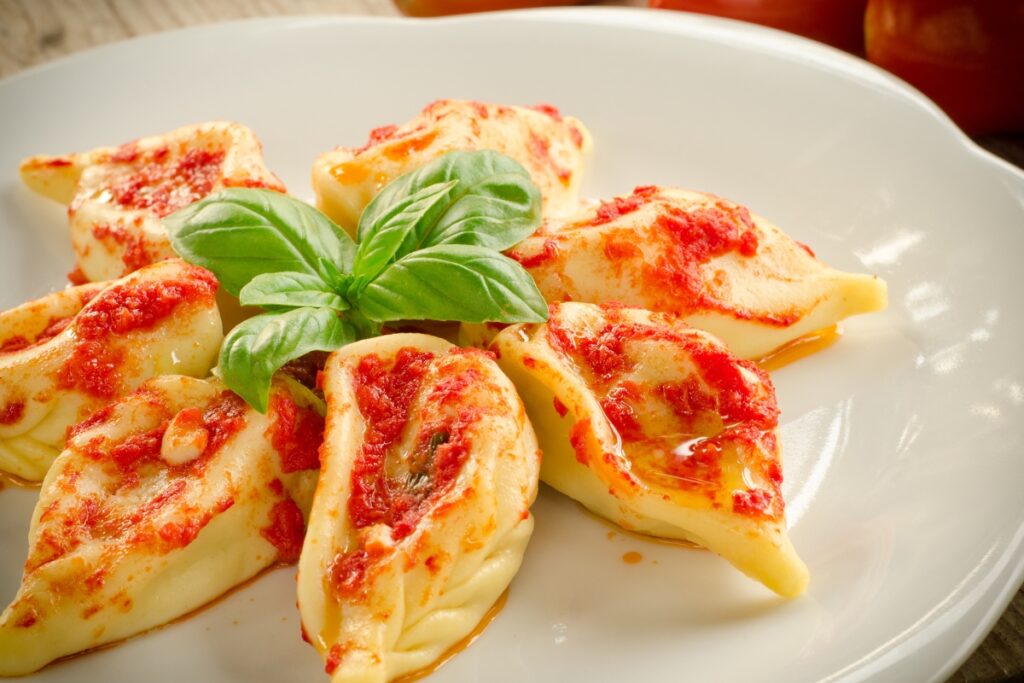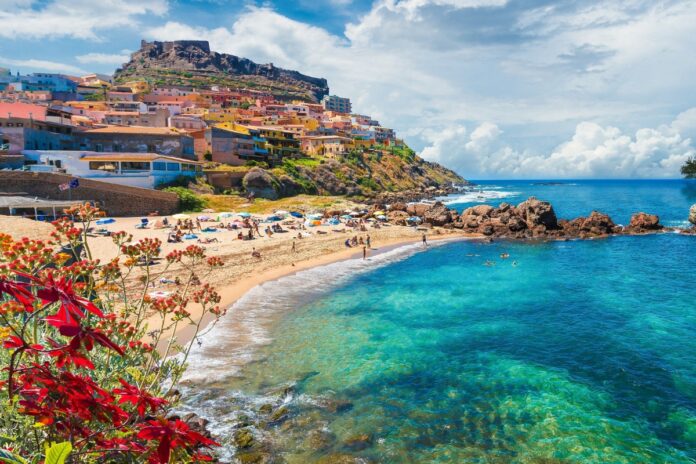Sardinia, the second-largest island in the Mediterranean, is a land of captivating contrasts and natural beauty. Known for its pristine beaches, rugged landscapes, and rich cultural heritage, Sardinia offers a unique and enchanting experience for travelers. In this comprehensive guide, we’ll explore Sardinia’s location, climate, history, key cities, culinary delights, agricultural highlights, tourism, and major attractions.
Location and Climate

Sardinia is located in the central Mediterranean, to the west of the Italian mainland and just south of the French island of Corsica. The island is characterized by its diverse landscapes, including mountainous interiors, rolling hills, and a stunning coastline dotted with beautiful beaches and secluded coves.
The climate in Sardinia is typically Mediterranean, with hot, dry summers and mild, wet winters. Coastal areas enjoy temperate conditions year-round, making them ideal for beach holidays, while the interior regions can experience more extreme temperatures. The island’s diverse microclimates support a wide range of flora and fauna, contributing to its rich biodiversity.
Historical Tapestry

Sardinia’s history is a fascinating tapestry woven from the influences of various civilizations. The island has been inhabited since prehistoric times, with evidence of early human settlement dating back to the Neolithic period. Key historical periods include:
Nuragic Civilization
One of the most distinctive aspects of Sardinia’s history is the Nuragic civilization, which flourished from around 1800 BCE to 500 BCE. This ancient culture is best known for its nuraghe – mysterious stone towers found throughout the island.
Phoenician and Carthaginian Influence
Sardinia was an important center for the Phoenicians and later the Carthaginians, who established colonies and trade networks on the island.
Roman Era
The Romans conquered Sardinia in the 3rd century BCE, integrating it into the Roman Empire. Many Roman ruins, including amphitheaters, villas, and roads, can still be seen today.
Medieval Period
After the fall of the Roman Empire, Sardinia saw a succession of rulers, including the Vandals, Byzantines, and various medieval kingdoms known as giudicati.
Spanish and Aragonese Rule
From the late Middle Ages until the 18th century, Sardinia was ruled by the Spanish Crown, leaving a lasting impact on its architecture, culture, and language.
Key Cities

Cagliari
The capital city of Sardinia, Cagliari, is a vibrant metropolis with a rich history and a lively cultural scene. Key attractions include the Castello district, the Roman Amphitheater, and the Cathedral of Santa Maria. The city’s bustling markets and beautiful Poetto Beach are also popular with visitors.
Sassari
The second-largest city on the island, Sassari, boasts a charming historic center, beautiful churches, and lively piazzas. The city’s museums, such as the Museo Nazionale Sanna, offer insights into Sardinia’s history and culture.
Alghero
Known for its Catalan heritage and stunning coastal views, Alghero is a picturesque town with narrow cobblestone streets, medieval walls, and beautiful beaches. The nearby Neptune’s Grotto, a spectacular sea cave, is a must-visit.
Olbia
Serving as a gateway to the Costa Smeralda, Olbia is a bustling port city with a rich history dating back to the Phoenician and Roman periods. The Basilica of San Simplicio and the nearby archaeological site of Nuraghe Riu Mulinu are notable attractions.
Nuoro
Often referred to as the cultural heart of Sardinia, Nuoro is known for its vibrant arts scene and traditional Sardinian culture. The Museo del Costume and the birthplace of Nobel Prize-winning author Grazia Deledda are key highlights.
Culinary Delights
Sardinian cuisine is a reflection of the island’s rich cultural heritage and agricultural traditions. The local dishes are characterized by fresh, locally sourced ingredients and bold flavors. Key culinary highlights include:

Pane Carasau
Also known as “music bread,” this thin, crispy flatbread is a staple of Sardinian cuisine. It is often served with olive oil, cheese, or as part of traditional dishes like pane frattau.
Culurgiones
These stuffed pasta pockets, similar to ravioli, are filled with potatoes, pecorino cheese, and mint, and are often served with tomato sauce.
Porceddu
A traditional dish of roasted suckling pig, porceddu is seasoned with herbs and cooked over an open fire, resulting in tender, flavorful meat.
Seadas
A popular Sardinian dessert, seadas are deep-fried pastries filled with cheese and drizzled with honey.
Myrtle Liqueur
Known as Mirto, this liqueur is made from the myrtle plant’s berries and leaves, offering a unique and aromatic flavor.
Click here to browse Recipes from the Sardinia Region
Agricultural Highlights
Agriculture plays a vital role in Sardinia’s economy, with the island producing a wide range of high-quality products. Key agricultural highlights include:

Sheep’s Milk Cheese
Sardinia is famous for its sheep’s milk cheeses, particularly Pecorino Sardo and Fiore Sardo. These cheeses are integral to the island’s culinary traditions.
Olive Oil
The island’s olive groves produce exceptional extra virgin olive oil, characterized by its rich flavor and golden color. Sardinian olive oil is highly prized by chefs and food enthusiasts.
Wine
Sardinia boasts a diverse range of wines, including Cannonau, Vermentino, and Carignano. The island’s vineyards benefit from the ideal climate and fertile soil.
Citrus Fruits
The island’s citrus groves produce high-quality oranges, lemons, and mandarins, which are used in a variety of dishes and beverages.
Tourism and Major Attractions
Tourism is a major industry in Sardinia, with visitors drawn to its stunning natural landscapes, historic sites, and vibrant culture. Major attractions and activities include:

Costa Smeralda
This glamorous stretch of coastline is known for its crystal-clear waters, white sandy beaches, and luxury resorts. Popular destinations include Porto Cervo and Cala di Volpe.
Nuraghe Su Nuraxi
A UNESCO World Heritage site, this well-preserved nuraghe complex near Barumini offers a fascinating glimpse into the island’s ancient past.
Gennargentu National Park
This rugged mountain range in central Sardinia is perfect for hiking, wildlife spotting, and exploring traditional villages.
La Maddalena Archipelago
This group of islands off the northeastern coast of Sardinia is a protected national park known for its stunning beaches, clear waters, and unique flora and fauna.
Cagliari’s Historic Districts
Explore the Castello district, with its narrow streets, historic buildings, and panoramic views, or visit the Roman Amphitheater and the Cathedral of Santa Maria.
Things to See and Do
Whether you’re interested in history, nature, or relaxation, Sardinia offers a wide range of activities to suit all interests. Here are some top recommendations:

Explore Ancient Ruin
Visit the nuraghe complexes, Roman ruins, and medieval castles scattered across the island to delve into Sardinia’s rich history.
Relax on the Beaches
Sardinia boasts some of the most beautiful beaches in the Mediterranean, including La Pelosa, Cala Luna, and Spiaggia di Tuerredda.
Hike and Cycle
The island’s diverse landscapes provide excellent opportunities for hiking and cycling, particularly in Gennargentu National Park and along the coastal trails.
Taste Local Cuisine
Sample Sardinian specialties like pane carasau, culurgiones, and porceddu at local trattorias and markets.
Experience Local Festivals
Immerse yourself in Sardinian culture at festivals such as Sant’Efisio in Cagliari, the Cavalcata Sarda in Sassari, and the Sagra del Redentore in Nuoro.
Conclusion
Sardinia, with its rugged landscapes, rich history, and vibrant culture, is a region that offers something for everyone. Whether you’re exploring ancient ruins, savoring local cuisine, or relaxing on pristine beaches, Sardinia provides an unforgettable experience. This island’s unique blend of natural beauty and cultural heritage makes it a must-visit destination for anyone seeking to discover the diverse charms of Italy.




